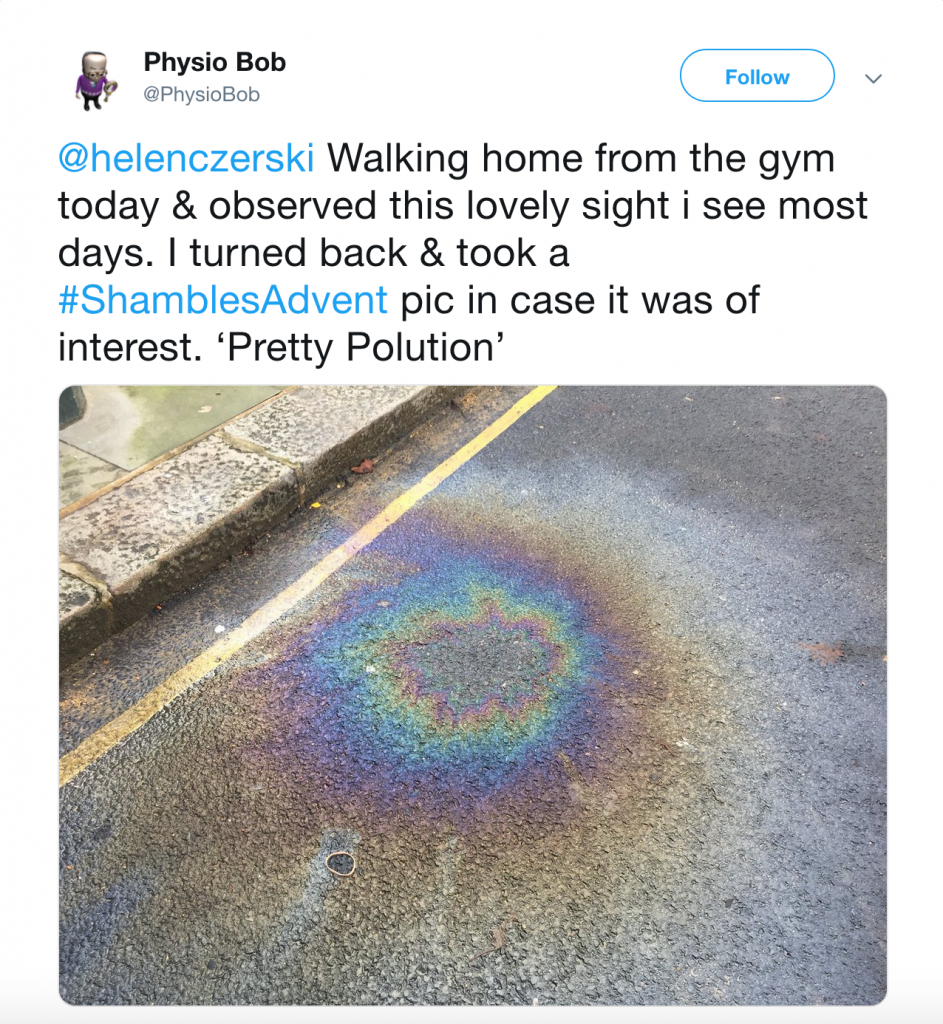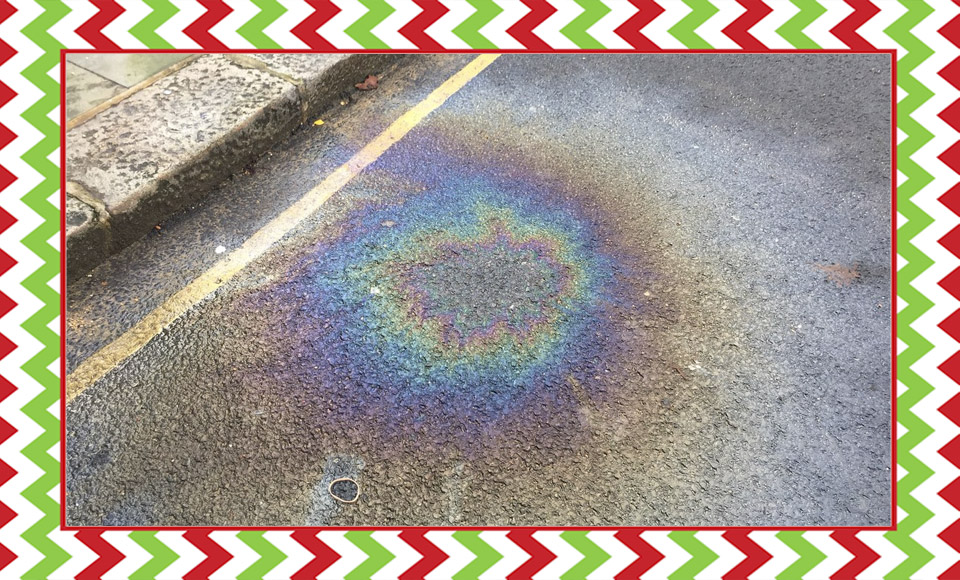Day 14 - Shambles Advent
Blog in a Teacup by Dr Helen CzerskiDay 14 -@PhysioBob
Every day until Christmas Dr Helen Czerski will be finding some cool, hidden science in pics of people’s every day lives. To get involved, tweet your pic to @helenczerski and @cosmicshambles with the hashtag #ShamblesAdvent

I love this picture (thanks @PhysioBob !). The fabulous thing about it is that it’s almost a perfect textbook example of a very particular series of colours, and yet it’s just an oil spill on the street.
These are interference colours. They’re formed as white light hits a thin transparent layer (the oil, in this case), travels through it, bounces off the back, and comes back out to our eyes. Because light is a wave, sometimes the wave coming in exactly cancels itself out on its way back (a peak in the wave going in lines up with a trough coming out). And sometimes it reinforces itself (so two peaks line up). Whether or not they line up depends on how thick the layer is, and the colour that we see depends on the combination of colours that make it back out. When white light goes in, the series of colours that comes out is very specific – it can’t be altered. And it depends only on the thickness of the layer.
The upshot is that we can tell how thick the layer is, because we know the wavelength of each colour of light. On this photo, the patch of oil is thinnest at the edges and thickest in the middle. The outermost layer (the greyish one) is so thin that the interference between incoming and outgoing light can’t happen at all – there isn’t even room for half a wavelength of light within the layer. We can tell that this layer is thinner than 200 nanometres (or 0.0002 mm). As the layer gets thicker towards the middle, we go through a fixed series of colours – red and then blue, followed by green, yellow, orange and more red. The second series of red appears when the layer is approximately five times as thick as the place where the colours start on the outside. Once the patch gets thick enough in the middle, the interference colours can’t be seen any more. There are two things to admire here. The first is how thin this layer of oil is – it could have been made by just a few drops of oil. The second is that we can see the wave nature of light from a patch of pollution on the street. And we can even measure the layer!
If you want to admire just how clear the series of colours on this photo is, compare the photo with the colour chart here.
Read all of the other entries of Helen’s #ShamblesAdvent here
The Cosmic Shambles Network relies on your support on pledges via Patreon so we can continue to provide great, new, exciting content without the need for third party ads or paywalls.
For as little as $1 a month you can support what we do and get some great rewards for doing so as well. Click the Patreon logo to pledge or find out more.
 Dr Helen Czerski is a physicist, first and foremost, but she’s acquired a few other labels along the way: oceanographer, presenter, author and bubble enthusiast. A regular on The Cosmic Shambles Network, she has also presented a number of acclaimed documentaries for the BBC and her first book, Storm in a Teacup, which looked at the physics of every day things, was a bestseller. Recently she was awarded the prestigious William Thomson, Lord Kelvin Medal and Prize from the Institute of Physics.
Dr Helen Czerski is a physicist, first and foremost, but she’s acquired a few other labels along the way: oceanographer, presenter, author and bubble enthusiast. A regular on The Cosmic Shambles Network, she has also presented a number of acclaimed documentaries for the BBC and her first book, Storm in a Teacup, which looked at the physics of every day things, was a bestseller. Recently she was awarded the prestigious William Thomson, Lord Kelvin Medal and Prize from the Institute of Physics.
If you would like to reuse this content please contact us for details
Subscribe to The Cosmic Shambles Network Mailing list here.


